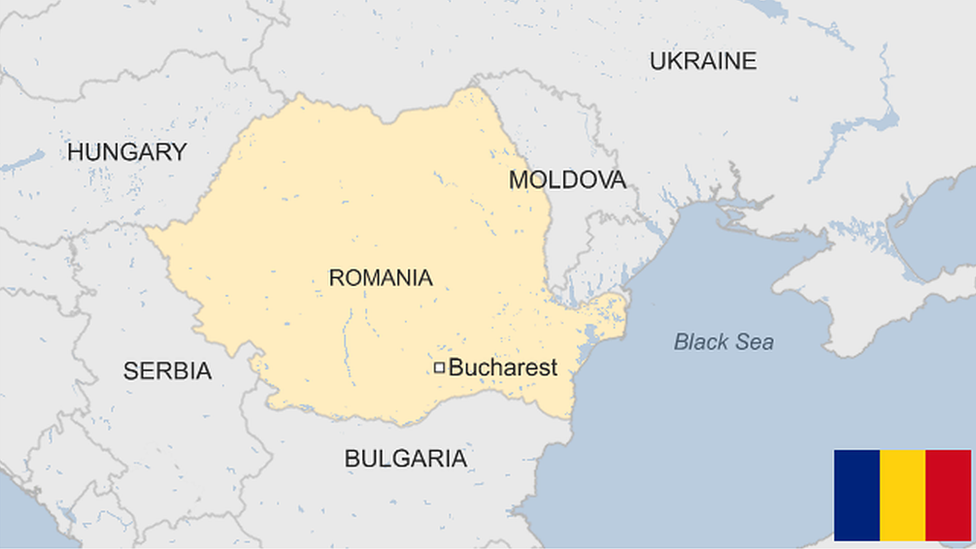King Michael: Romanians unite to mourn their last monarch
- Published

Romanians have paid tributes to King Michael, who died at the age of 96
Georgeta Untaru lays a white chrysanthemum - "for his sincerity" - and lights a candle on the steps of the royal palace.
A geologist by profession, she was born in March 1944, five months before the 23-year-old King Michael succeeded in switching Romania from the Nazi to the Allied side in World War Two.
"Throughout the communist years, they taught us only bad things about him. It was only when he came back for the first time, in 1992, that I realised I'd been indoctrinated. Then I started to find out more about who he really was," she says.
Next to pay a tribute was an older lady, Ileana, who was glad to speak but unwilling to disclose her age. Her father fought in the Royal Romanian army in both world wars, she said, and was decorated by the king for his bravery, fighting the Soviets on the Eastern Front.
"After the war the communists could never forgive him for that. He was thrown out of the army, and died of sadness soon afterwards."
Above the palace, nowadays the National Art Museum, the Romanian flag flies at half mast. The pavement and railings are strewn with candles, flowers, and portraits of the king.
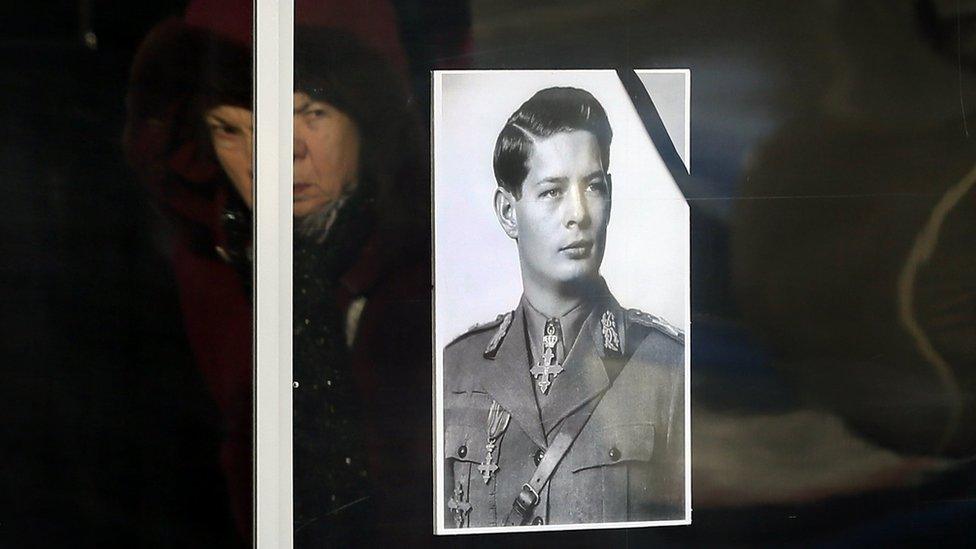
He was one of the last surviving World War Two leaders
Just down the road at a large, rather elegant bookshop, Ciprian Ciocan has made a pile of all the books on the king and the royal family, and is just starting to put them on display.
The king's coffin will lie in state at the palace for two days before his funeral. He remembers the king visiting his home town of Galati, on the River Danube in eastern Romania in the 1990s, and his grandparents' excitement.
"Romania would certainly be on a better path today, if the monarchy had been restored," he said.
At least a dozen books on him and the royal family have been published in recent years, he said, as Romanians rediscovered their royal family.
There are conversations with the king, a selection of his favourite music on CDs, and even a book of photographs of him with his favourite cars.
He was a keen mechanic, happiest when tinkering with the engine of one of the two jeeps the communists allowed him to take out of the country when he was forced to abdicate 70 years ago.

The books about the king include photographs of him with his favourite cars
In the Herastrau Park at the Elisabeta Palace, a book of condolences lies beneath a portrait of the king as the wintry sun shines in through the hallway of his former residence. An officer in full dress uniform shows me inside. A lady in deep mourning hands me a pen to sign the book.
Among the many tributes to him, perhaps the most surprising was from Ion Iliescu, Romania's Socialist president in the years after the 1989 revolution and the man who did the most to prevent a restoration of the monarchy in the early 1990s. Mr Iliescu posted a photograph of himself handing a huge bunch of yellow roses to a stony-faced King Michael.
"Our relationship was not easy, in the troubling times of the birth of the transition… Together we managed to convey to our partners a strong message on adopting the values of the European community," he wrote. "May God rest his soul."
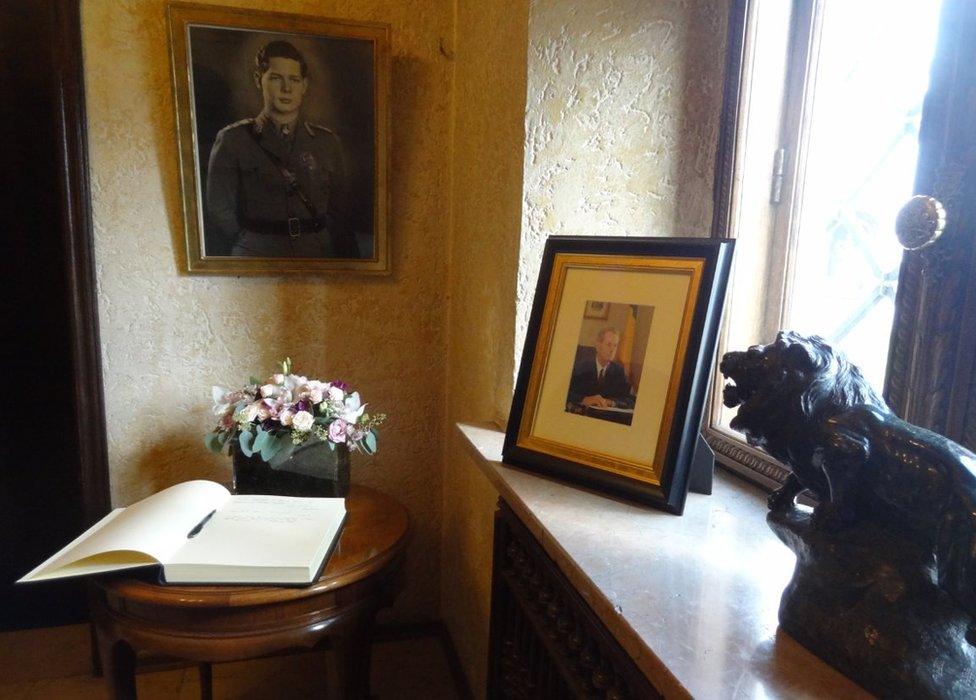
Tributes have been paid in a book of condolences at the Elisabeta Palace
Republican Romania is deeply polarised today, between the governing Socialists and liberals who accuse them of trying to weaken the powerful anti-corruption agency. Ironically the king's death, at this moment, may help the current government to survive.
Anti-government protests have been postponed out of respect for the period of mourning.
A military plane will bring his body back to Romania from Switzerland - where the royal family settled after leaving the country - next Wednesday. His coffin will be taken first to Peles Castle at Sinaia in the high Carpathians, before being brought back to Bucharest.
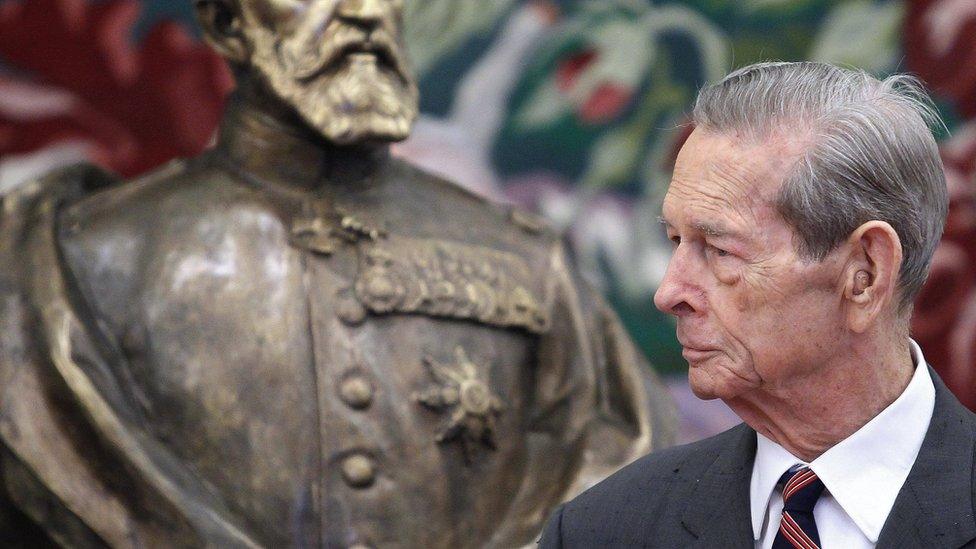
Romania's former king was diagnosed with cancer last year
He will be buried on 16 December with full state honours at Curtea de Arges, north of the capital, beside his wife Queen Anne, who died last year. Margareta, 68, the eldest of their five daughters, is next in line to the throne the family lost.
Might the monarchy yet be restored? At the palace gates, Cristian Soimoru, a 44-year-old jurist, shakes his head. "Romania missed so many opportunities," he says sadly. "Michael was our last king."
- Published5 December 2017

- Published5 December 2017
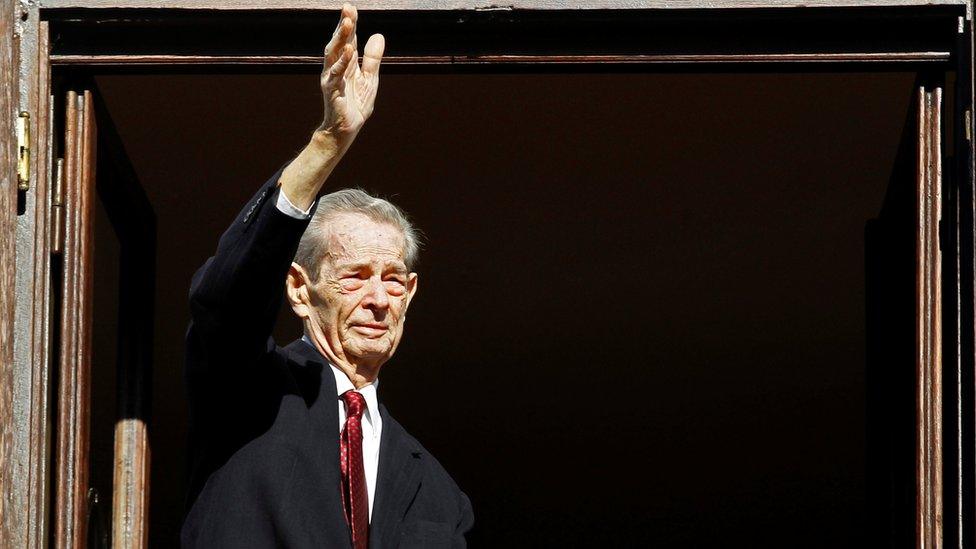
- Published18 December 2024
